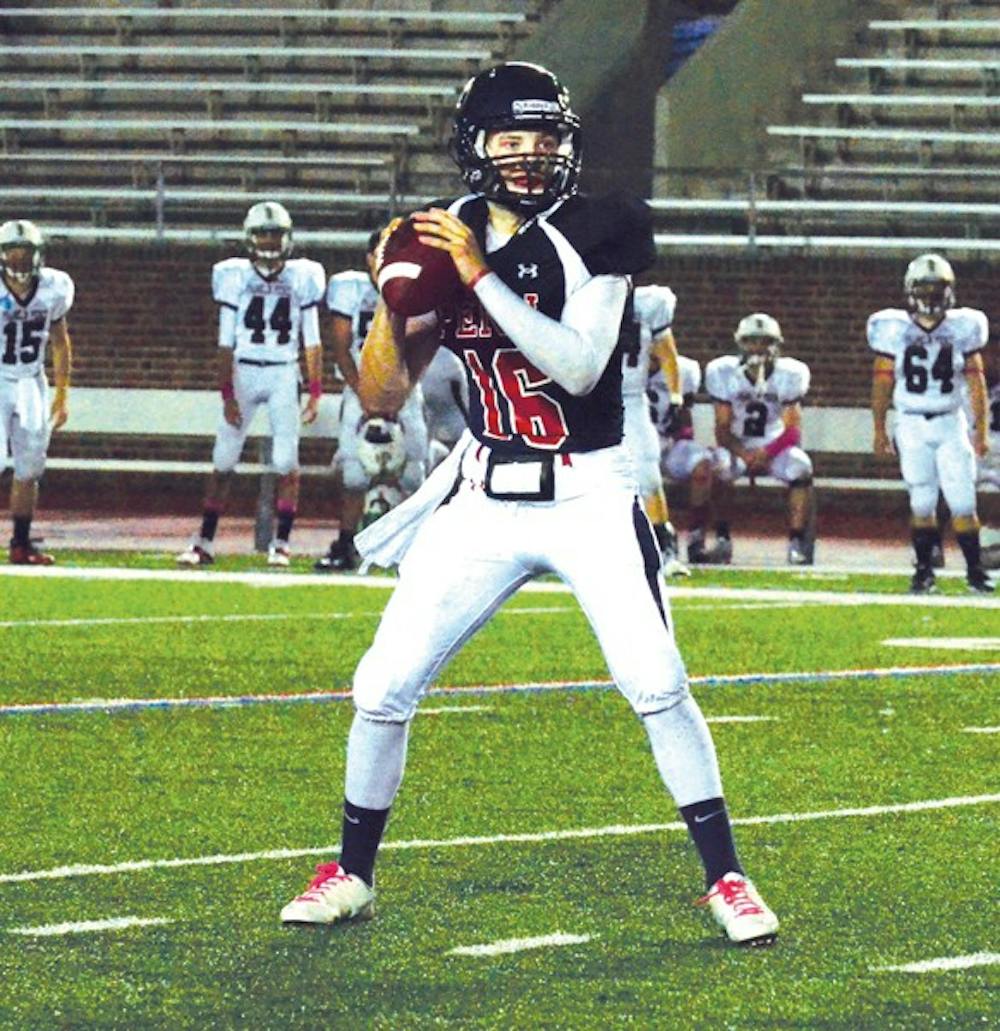
Since the passage of Title IX in 1972, women have made huge strides both in the classrooms and on the playing fields of major universities, all under the banner of equality. At Penn, women now outnumber men 51 to 49 percent.
Despite this equality in Penn’s student body composition, Penn’s student-athletes are still overwhelmingly male. According to the PennAthletics.com, 585 of the 960 student-athletes at Penn are male, meaning that the ratio of Quakers student-athletes is 61 percent male to 39 percent female. Title IX states that there can only be a five percent gap between the number of female and male athletes for a school to be considered proportional.
Penn is not alone in falling short of the proportionality mark. In fact, only one Ivy League school — Brown — meets the mark. Brown is the closest with a 51 to 49 percentage split between male and female athletes, while Columbia has the biggest disparity with a 63 to 37 percent gap.
Penn Athletics has undertaken a gender equity initiative in the last year in an attempt to correct the University’s proportionality problem. Men’s and women’s teams were given target roster sizes to reach by the end of the 2013-14 academic year.
Arguments have been circulating amongst teams facing cuts that Penn sprint football should be terminated to ease the gender gap. But simply eliminating 50 male athletes makes the ratio of males to females 59 to 41, still more than six percentage points away from the Title IX standard.
Penn’s policy is not very drastic when compared to Temple’s solution to gender inequity. When faced with a similar proportionality gap between male and female athletes, Temple Athletics cut five men’s varsity programs.
I am a member of the varsity women’s swimming team, and I have seen firsthand the effects of this policy. The men’s swimming team has had to cut six athletes, bringing the roster down from 40 to 34, while the women’s team has fought to keep its roster at just 42. Even though Penn will maintain its current number of varsity teams, this bureaucratic decision is inherently unfair when it trickles down to the personal level.
In order to satisfy the target roster size, women’s teams have had to add walk-ons and “recruit” athletes from the club level who have no realistic chance of getting varsity playing time. This practice is unfair to the newly christened Division I varsity athletes, because it denies them the opportunity to be game-changing players at the more appropriate club level. Instead, they are given a one-way ticket to a season of bench-riding.
On the men’s side, “target roster size” is code for cuts. Talented athletes, many of whom were recruited to play sports at Penn, are being denied the opportunity to compete for the sake of equality.
For instance, one day after the swimming teams finished their practice together, I saw a former male teammate — one who had been cut due to the gender equity initiative — walk onto the pool deck to practice by himself, just for his own personal benefit. It broke my heart to see someone who wanted to be there was without a team.
Building that mental toughness within athletes like the male ex-teammate I saw training by and for himself after getting cut is exactly what Penn Athletics should be all about. And that mental toughness doesn’t come when so many of those athletes are getting cut and being deprived of that support.
To the University, having “proportional” status is a legal obligation. Thus Penn’s reasoning for implementing its gender equity initiative is understandable.
However, athletes are more than just numbers on a tally sheet.
Denying athletes the opportunity to compete at the varsity level robs them of so much more than a spot to practice with the team. It removes them from a support network of brothers or sisters who watch out for them and want them to succeed.
There are other options for rectifying Penn’s gender equity problem so that the Quakers don’t veer into catastrophic Temple territory, such as adding a varsity women’s rugby program to boost the overall number of female athletes or cutting a men’s team like sprint football. Though I personally don’t see a point to sprint football, it won’t go away because it has always been a welcome nov elty sport for Penn Athletics. An easier and more welcome solution would be to downsize Penn football’s roster — which currently numbers 122 players — to a less excessive total, especially since most other Ivies have significantly fewer team members.
Legally, the University has to take action to rectify the percentages, but the method that it has chosen with the gender equity initiative should be reconsidered. This initiative devalues the Division I experience for too many Penn athletes to be upheld as is in the future.
LAINE HIGGINS is a College freshman from Wayzata, Minn. and is a staff writer for The Daily Pennsylvanian. She is also a member of the Penn varsity women’s swimming team. She can be reached at dpsports@thedp.com.
COLUMNIST’S ISSUE
Tony | To-do list: A full plate waiting for Bilsky’s successor
Tydings | Penn-Princeton rivalry takes an unpaid vacation
Phillips | Five predictions more reliable than Penn basketball
The Daily Pennsylvanian is an independent, student-run newspaper. Please consider making a donation to support the coverage that shapes the University. Your generosity ensures a future of strong journalism at Penn.
DonatePlease note All comments are eligible for publication in The Daily Pennsylvanian.





